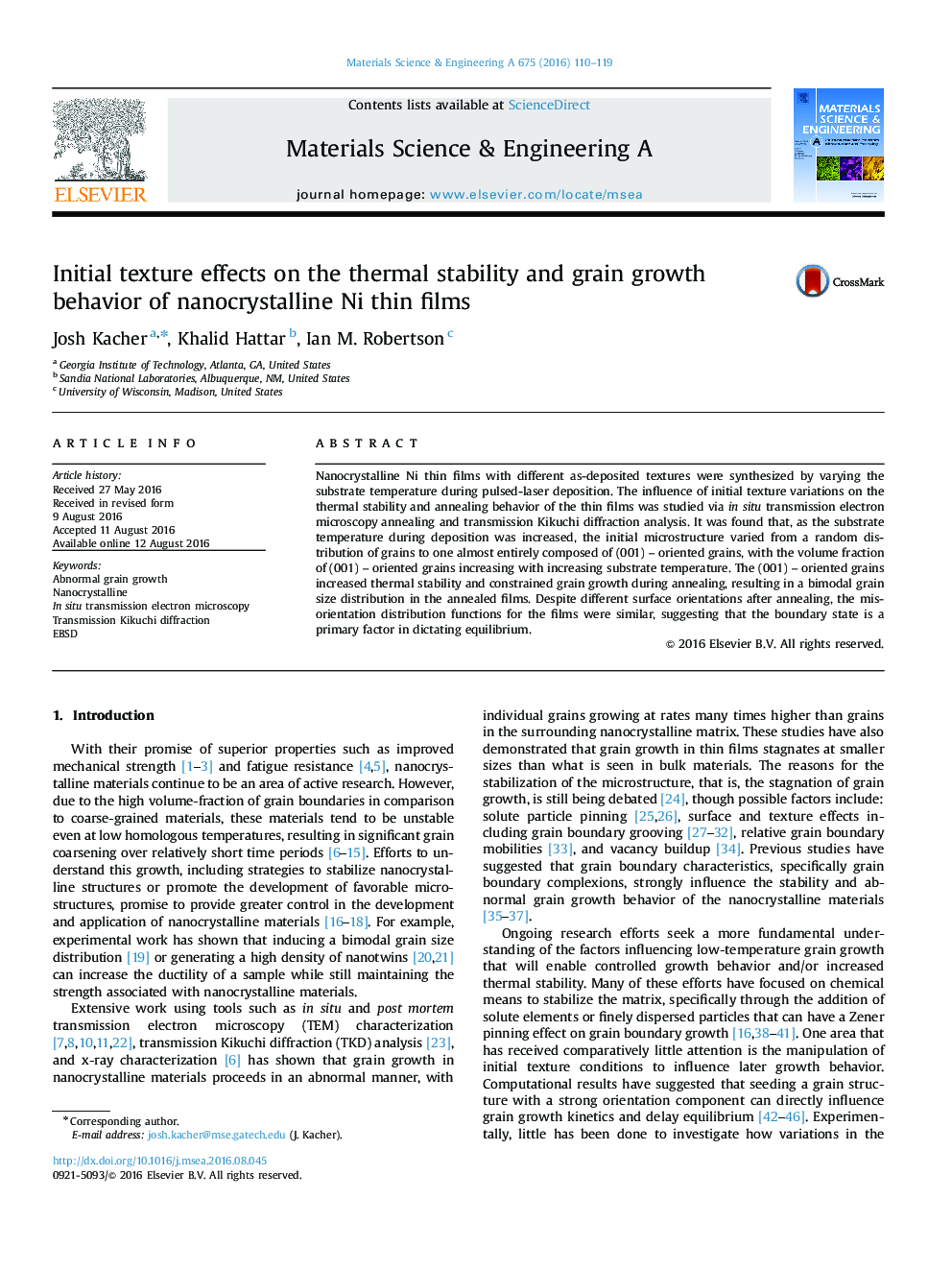| Article ID | Journal | Published Year | Pages | File Type |
|---|---|---|---|---|
| 1573019 | Materials Science and Engineering: A | 2016 | 10 Pages |
Abstract
Nanocrystalline Ni thin films with different as-deposited textures were synthesized by varying the substrate temperature during pulsed-laser deposition. The influence of initial texture variations on the thermal stability and annealing behavior of the thin films was studied via in situ transmission electron microscopy annealing and transmission Kikuchi diffraction analysis. It was found that, as the substrate temperature during deposition was increased, the initial microstructure varied from a random distribution of grains to one almost entirely composed of (001) - oriented grains, with the volume fraction of (001) - oriented grains increasing with increasing substrate temperature. The (001) - oriented grains increased thermal stability and constrained grain growth during annealing, resulting in a bimodal grain size distribution in the annealed films. Despite different surface orientations after annealing, the misorientation distribution functions for the films were similar, suggesting that the boundary state is a primary factor in dictating equilibrium.
Keywords
Related Topics
Physical Sciences and Engineering
Materials Science
Materials Science (General)
Authors
Josh Kacher, Khalid Hattar, Ian M. Robertson,
